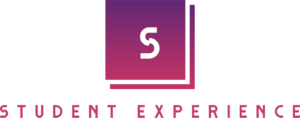
Designing for Excellence: Unraveling the Secrets of Effective Curriculum
In the world of education, the key to unlocking excellence lies in the design of the curriculum. A well-crafted curriculum serves as the roadmap for both educators and learners, guiding them toward educational goals and fostering meaningful learning experiences. In this blog, we’ll dive into the intricacies of effective curriculum design, exploring how it influences learner engagement, outcomes, and adaptability.
1. The Foundation of Curriculum Design: Understanding Educational Goals
Educational goals serve as the North Star for curriculum designers. These goals outline what students should know, understand, and be able to do upon completing a course. When a curriculum aligns closely with these goals, it sets the stage for achieving exceptional learning outcomes. On the other hand, a curriculum without clear educational objectives can lead to confusion, disengagement, and missed opportunities for growth.
2. Tailoring Curriculum to Learner Needs: The Key to Engagement
Effective curriculum design places learners at the center. Recognizing the diverse needs, learning styles, and prior knowledge of students is paramount. By tailoring the curriculum to individual learners, educators create a more engaging and meaningful learning experience. Personalization leads to increased student motivation, as students can see the relevance of the content to their own lives and aspirations.
3. Elements of Effective Curriculum Design: A Deep Dive
A. Learning Objectives and Outcomes:
Crafting well-defined learning objectives is the cornerstone of curriculum design. Learning objectives clarify what students are expected to achieve and provide a clear direction for teaching and assessment. These objectives should be specific, measurable, achievable, relevant, and time-bound (SMART). By setting clear objectives, educators pave the way for focused and effective learning experiences.
B. Content Selection and Sequencing:
Selecting the right content is an art that requires careful consideration. The content should align with learning objectives and be relevant to the subject matter. Equally important is the sequencing of content, as it should follow a logical progression that builds on prior knowledge. A well-structured sequence enhances comprehension and retention, making it easier for students to grasp complex concepts.
C. Assessment Strategies:
Assessments are more than just tools for evaluation; they play a crucial role in curriculum design. Various assessment methods, such as quizzes, projects, and presentations, can provide insights into student comprehension and skill development. Formative assessments offer real-time feedback for instructional adjustments, while summative assessments measure overall achievement. A balanced assessment approach ensures a comprehensive understanding of student progress.
D. Incorporating Active Learning:
Active learning techniques transform passive learners into active participants. By engaging students through discussions, case studies, simulations, and collaborative projects, educators foster critical thinking and problem-solving skills. Active learning encourages students to apply theoretical knowledge to practical scenarios, enhancing their ability to retain and apply information.
4. Flexibility and Adaptability: Navigating the Changing Educational Landscape
In today’s rapidly evolving world, educational needs are constantly changing. An effective curriculum design should be adaptable to accommodate technological advancements, shifts in industry demands, and societal changes. Regular assessment and feedback loops allow educators to make necessary adjustments, ensuring that the curriculum remains relevant and impactful.
5. The Role of Educators in Curriculum Design: Collaboration and Innovation
Educators are not just deliverers of content; they are integral to curriculum design. Collaborative efforts among educators lead to well-rounded curriculum development, bringing together diverse perspectives and expertise. Innovative teaching methods, such as project-based learning, flipped classrooms, and interdisciplinary approaches, infuse excitement and creativity into the learning process.
6. Case Studies: Showcasing Exemplary Curriculum Design
Examining successful examples of curriculum design sheds light on effective practices. [Insert examples of institutions or educators here.] These pioneers have demonstrated the power of learner-centered design, clear objectives, and innovative strategies. Their achievements underscore the positive impact of strategic curriculum planning.
7. Overcoming Challenges in Curriculum Design: Tips and Strategies
Effective curriculum design is not without its challenges. Limited resources, time constraints, and resistance to change can impede the process. To overcome these challenges, educators can [provide practical tips and strategies here.] By embracing a growth mindset, seeking professional development opportunities, and fostering open communication, educators can navigate these obstacles with confidence.
Takeaway
Designing for educational excellence is a multifaceted endeavor that requires careful planning, creativity, and adaptability. A curriculum that aligns with educational goals, caters to learner needs, and incorporates effective design elements can lead to transformative learning experiences. As educators continue to unravel the secrets of effective curriculum design, they pave the way for a brighter future where excellence is not just a goal, but a reality.
